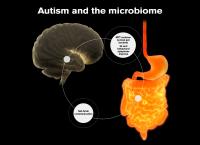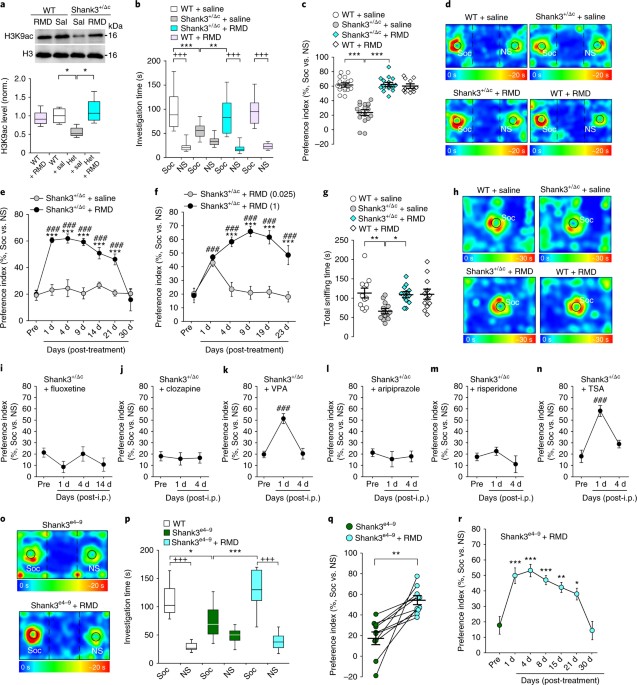Summer
gay👽pheno🌈
- Joined
- Nov 23, 2020
- Posts
- 482
- Reputation
- 1,683
Hello everyone~by the title suggest we will focus today on reversing social deficits of those who are autists(also aspergers) !
Lets start...
Since now i think everybody here knows that a damaged microbiota is linked with people with autism.
¤ What is the ideal bacteria for an healthy microbiota? The Lactobacillius reuteri.
☆Also an interesting fact:
The Lactobacillus reuteri MM4-1A (ATCC-PTA-6475) is present in human milk. Therefore people who were not breastfeeded when baby are more likely having ASD
There are also cases where ASD patients benefits from having an general fecal transplant with even by 50%
 .
.
.
.
Anyway...
But lets take a look at some more interesting discoveries regarding this disorder...
Which is... SHANK3 gene
What this gene has to do with ASD? See for yourself:
*From the nature neuroscience article:

 www.nature.com
www.nature.com
Basically this research demonstrated that a brief treatment with a very low dose of romidepsin, a Food and Drug Administration-approved anti-cancer drug, restored social deficits in animal models of autism in a sustained fashion.
What is interesting is that the treatment was only needed 3 days before showing its effects on social deficits in mice deficient in a gene called Shank 3, an important risk factor for ASD. The effect lasted 3 weeks
~
Note:
That is equivalent to several years in humans, suggesting the effects of a similar treatment could potentially be long-lasting, the researchers say.
▪︎How is this working?
-Autism involves the loss of many genes and to rescue the social deficits, a compound has to affect a number of genes that are involved in neuronal communication
》Since many genes in autism are altered the UB scientists knew a histone modifier might be effective ... and that one would be HDAC
▪︎Solutions?
HDAC inhibitor
The drug romidepsin is a highly potent HDAC inhibitor so it turned down the effects of HDAC2, allowing genes involved in neuronal signaling to be expressed normally.
▪︎Methods:
`Since romidepsin can be tough as fuck to procur or expensive asf without prescription we gotta cope with other drugs that can inhibit the HDAC so it turn down the 2
A perfect alternative to romidepsin that can inhibit HDAC is Vorinostat
Vorinostat for example, is a pan-HDAC inhibitor of sorts, inhibiting HDACs 1, 2, 3, 8, 9 and more to one degree or another (mostly Class I, some Class II).
There are many other HDAC inhibitors out there but they are either more expensive or not that useful for our cause.
TL;DR
HDAC inhibitor(Vorinostat/Romidepsin) can help the damaged genes of ASD making the subject more neurotypical
Lets start...
Since now i think everybody here knows that a damaged microbiota is linked with people with autism.
¤ What is the ideal bacteria for an healthy microbiota? The Lactobacillius reuteri.
☆Also an interesting fact:
The Lactobacillus reuteri MM4-1A (ATCC-PTA-6475) is present in human milk. Therefore people who were not breastfeeded when baby are more likely having ASD
There are also cases where ASD patients benefits from having an general fecal transplant with even by 50%
Autism symptoms reduced nearly 50% two years after fecal transplant
In a new study, 'Long-term benefit of Microbiota Transfer Therapy in Autism Symptoms and Gut Microbiota,' published in Scientific Reports, Arizona State University researchers Rosa Krajmalnik-Brown, Ph.D., James Adams, Ph.D, and lead author Dae-Wook Kang, Ph.D, demonstrate long-term beneficial...
www.eurekalert.org
.
.
Anyway...
But lets take a look at some more interesting discoveries regarding this disorder...
Which is... SHANK3 gene
What this gene has to do with ASD? See for yourself:
Haploinsufficiency of the SHANK3 gene is causally linked to autism spectrum disorder (ASD), and ASD-associated genes are also enriched for chromatin remodelers. Here we found that brief treatment with romidepsin, a highly potent class I histone deacetylase (HDAC) inhibitor, alleviated social deficits in Shank3-deficient mice, which persisted for ~3 weeks.
*From the nature neuroscience article:

Social deficits in Shank3-deficient mouse models of autism are rescued by histone deacetylase (HDAC) inhibition - Nature Neuroscience
Qin et al show that autism-like social deficits in Shank3-deficient mice arise from β-catenin-mediated transcriptional upregulation of histone deacetylase 2 (HDAC2) and are persistently alleviated by brief treatment with HDAC inhibitor romidepsin.
Basically this research demonstrated that a brief treatment with a very low dose of romidepsin, a Food and Drug Administration-approved anti-cancer drug, restored social deficits in animal models of autism in a sustained fashion.
What is interesting is that the treatment was only needed 3 days before showing its effects on social deficits in mice deficient in a gene called Shank 3, an important risk factor for ASD. The effect lasted 3 weeks
~
Note:
That is equivalent to several years in humans, suggesting the effects of a similar treatment could potentially be long-lasting, the researchers say.
▪︎How is this working?
-Autism involves the loss of many genes and to rescue the social deficits, a compound has to affect a number of genes that are involved in neuronal communication
》Since many genes in autism are altered the UB scientists knew a histone modifier might be effective ... and that one would be HDAC
Source:In the autism model, HDAC2 is abnormally high, which makes the chromatin in the nucleus very tight, preventing genetic material from accessing the transcriptional machinery it needs to be expressed,” said Yan. “Once HDAC2 is upregulated, it diminishes genes that should not be suppressed, and leads to behavioral changes, such as the autism-like social deficits.
▪︎Solutions?
HDAC inhibitor
The drug romidepsin is a highly potent HDAC inhibitor so it turned down the effects of HDAC2, allowing genes involved in neuronal signaling to be expressed normally.
▪︎Methods:
`Since romidepsin can be tough as fuck to procur or expensive asf without prescription we gotta cope with other drugs that can inhibit the HDAC so it turn down the 2
A perfect alternative to romidepsin that can inhibit HDAC is Vorinostat
Vorinostat for example, is a pan-HDAC inhibitor of sorts, inhibiting HDACs 1, 2, 3, 8, 9 and more to one degree or another (mostly Class I, some Class II).
There are many other HDAC inhibitors out there but they are either more expensive or not that useful for our cause.
TL;DR
HDAC inhibitor(Vorinostat/Romidepsin) can help the damaged genes of ASD making the subject more neurotypical
Last edited:

